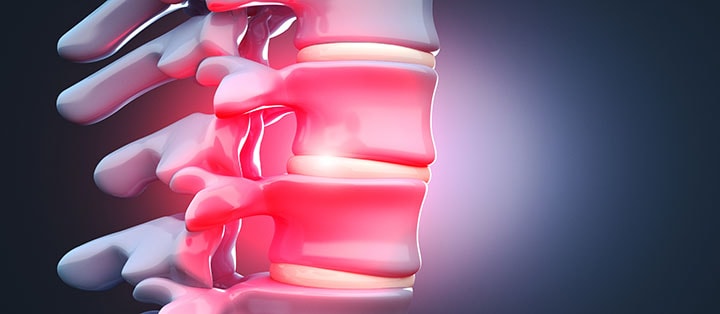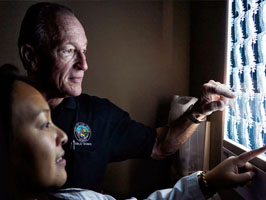Degenerative disc disease (DDD) isn't really a disease—it's the normal wear and tear process of aging on your spine. Unfortunately, as we age, our intervertebral discs (pillow-like pads between the bones in your spine) lose their flexibility, elasticity, and shock-absorbing characteristics. When this happens, the discs change from a supple, flexible state that allows fluid movement, to a stiff and rigid state that restricts your movement.

Degenerative Disc Disease Causes
Degenerative disc disease is usually the result of aging, so you're more likely to have it if you're older than 50. However, younger people can have symptoms of DDD as well. Injuries can also start the degenerative process in your intervertebral discs.The degenerative process causes your discs to lose their ability to cushion your movements. Gradually, the collagen (protein) structure of the outer portion of your disc—the annulus fibrosus—weakens. The degenerative process also affects the water content in your discs, and the water content is crucial to maintaining movement. With DDD, the water-attracting molecules in your discs decrease, making your discs become more stiff and rigid.
Degenerative Disc Disease Symptoms
There are several symptoms that are fairly consistent for people with lower back pain or neck pain from degenerative disc disease, including:• Pain that is usually related to activity and will flare up at times but then return to a low-grade pain level, or the pain will go away entirely.
• The amount of chronic pain—referred to as the patient's baseline level of pain—is quite variable between individuals and can range from almost no pain/just a nagging level of irritation, to severe and disabling pain.
• Severe episodes of back or neck pain that will generally last from a few days to a few months before returning to the individual's baseline level of chronic pain.
• Chronic pain that is completely disabling from degenerative disc disease does happen in some cases, but is relatively rare.
• Activities that involve bending, lifting, and twisting will usually make the patient's pain worse
• Certain positions will usually make the pain worse. For example, for lumbar degenerative disc pain, the pain is generally made worse with sitting, since in the seated position the lumbosacral discs are loaded three times more than standing.
• Walking, and even running, may actually feel better than prolonged sitting or standing
• Patients will generally feel better if they can change positions frequently
• Patients with lumbar DDD will generally feel better lying in a reclining position (such as with legs propped up in a recliner), or lying down with a pillow under the knees, since these positions relieve stress on the lumbar disc space.

